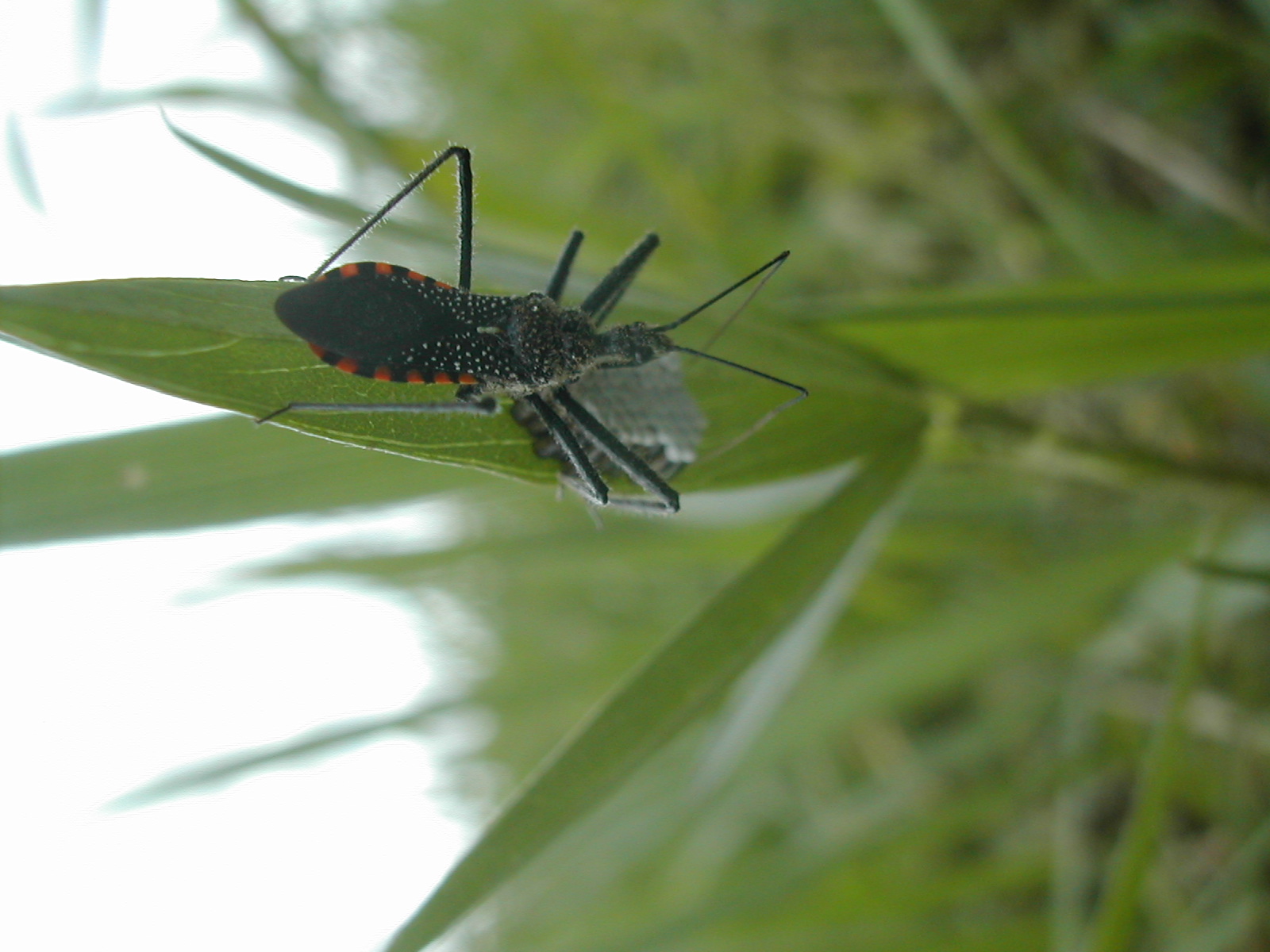James Gilbert
2011 Update:
Post-doctoral Associate with Steve Simpson
U.K.
Research
I have now finished my postdoc at Maryland, and am currently Associate Lecturer at the University of Derby, UK, and a visiting postdoc in the lab of Andrea Manica at the University of Cambridge, UK.
I am interested in using comparative and experimental methods to study how nutrition affects ecology and evolution, most especially the evolution of parental care and sociality in insects.
During my postdoc in Bill Fagan's lab at Maryland, I focused on evolutionary consequences of nutrient limitation. I investigated how nutrient scarcity affects protein evolution in bacteria (Gilbert & Fagan, 2010) and in Drosophila, whilst in collaboration I also investigated nutrient limitation in body tissues of insects with different ecologies (e.g. feeding guilds, Martinson et al, 2008; geographic regions, Hambäck et al, 2009).
During my PhD at Cambridge, I found that, in insects, provisioning offspring with food is associated with sharply different, endotherm-like life history patterns (Gilbert & Manica 2010). My experimental work on male-caring assassin bugs (Rhinocoris tristis) also revealed strong mating benefits to males caring for eggs (Gilbert et al 2010), arising from high population density which may be driven, unusually, by plant preference (Gilbert & Manica, manuscript in review). This in turn may drive a novel sexual conflict - conflict over egg conspicuousness, where males get mating benefits from guarding eggs conspicuously, but females prefer hiding their own eggs from parasites (Gilbert & Manica, 2009). In collaboration, I am conducting ongoing lab- and field-based investigations into offspring provisioning in burying beetles (Nicrophorus vespilloides), and I am also investigating the evolutionary consequences of investing nutrients into costly nuptial gifts and spermatophores in bush crickets (Vahed et al, manuscript in review).
Publications *
- Gilbert, J.D.J. and W.F. Fagan. 2010. Contrasting mechanisms of proteomic nitrogen thrift in Prochlorococcus. Molecular Ecology, in press. [Featured as a "Perspective" in the same issue; see Bragg, J. 2010. How Prochlorococcus bacteria use nitrogen sparingly in their proteins. Molecular Ecology, in press.]
- Gilbert J.D.J. and A. Manica. 2010. Parental care trade-offs and life history relationships in insects. American Naturalist, 176(2): 212-226. ["Recommended" on Faculty 1000]
- Gilbert. J.D.J., L.K. Thomas amd A. Manica. 2010. Costs and benefits of parental care in assassin bugs. Ecological Entomology, DOI: 10.1111/j.1365-2311.2010.01221.x (online early view)
- Gilbert, J.D.J. 2010. Insect dry weight: shortcut to a difficult quantity using museum specimens. European Journal of Entomology, manuscript accepted
- Gilbert, J. D. J. and A. Manica. 2009. Brood conspicuousness and clutch viability in male-caring assassin bugs (Rhinocoris tristis). Ecological Entomology. 34 (2): 176-182.
- Hambäck, P.A., J. Gilbert, K. Schneider, H.M. Martinson, G. Kolb, and W.F. Fagan. 2009. Effects of body size, trophic mode and larval habitat on dipteran stoichiometry: A regional comparison. Oikos 118: 615-623.
 PDF / abstract
PDF / abstract - Zalat, S., F.S. Gilbert, H. Fadel, M.S. El-Hawagry, H.M. Saleh, S. Kamel, and J. Gilbert. 2008. Biological explorations of Sinai: flora and fauna of Wadi Isla and Hebran, St Katherine Protectorate, Egypt. Egyptian Journal of Natural History 5: 6-15.
- Martinson, H.M.*, K. Schneider*, J. Gilbert, J.E. Hines, P.A. Hambäck, and W.F. Fagan. 2008. Detritivory: stoichiometry of a neglected trophic level. Ecological Research 23 (3): 487-491. (*co-first authors) abstract
- Clayton, N.S., J.M. Dally, J.D.J. Gilbert, and A. Dickinson. 2005. Food caching by western scrub-jays (Aphelocoma californica) is sensitive to conditions at recovery. J. Exp. Psychol. Anim. Behav. Proc. 31:115-124.
- Gilbert, J. D. J. 2001. Callicera aurata in Surrey. Entomol. Mon. Mag. 137:153.




